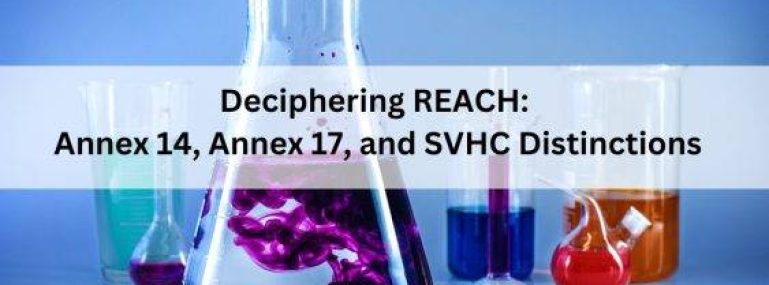To oversee and manage the utilization of chemicals in the European Union (EU), the EU established the Registration, Evaluation, Authorization, and Restriction of Chemicals (REACH) legislation. Enacted on June 1, 2007, REACH aims to ensure a high standard of protection for both the environment and public health while simultaneously enhancing the competitiveness of the European chemicals sector.
In our exploration of “Meeting REACH requirements,” we identified three pivotal lists that EU manufacturers must be mindful of to ensure comprehensive compliance:
1. Substances of Very High Concern (SVHC):
Chemicals with potential hazards to the environment or human health are listed on the SVHC or Candidate Lists. These substances undergo further scrutiny and may end up on the Authorization List. Manufacturers, importers, and downstream users have specific obligations if a substance is included on the Candidate List. If an SVHC is present in their product at a concentration exceeding 0.1% by weight, they must report it to the European Chemicals Agency (ECHA). The purpose of this list is to monitor and prioritize compounds for future evaluation and regulation.
The SVHC list is revised biannually, necessitating businesses to reassess product compliance and request data from suppliers to meet REACH standards.
2.The Authorization List (Annex XIV):
Annex XIV of REACH, known as the Authorization List, comprises substances of very high concern (SVHC) posing serious risks to the environment or human health. Unless a specific exemption applies, companies using substances listed on the Authorization List must obtain authorization from ECHA before their use. The primary goal of the Authorization List is to phase out or restrict the use of hazardous substances gradually while promoting safer alternatives.
3.The Restriction List (Annex XVII):
The Restriction List, or Annex XVII of REACH, imposes specific restrictions on the production, marketing, or use of hazardous chemicals. These legally binding restrictions aim to mitigate risks associated with substances, products, or processes. Restrictions may take the form of usage prohibitions, concentration thresholds, or other controls.
In summary, the REACH legislation assigns distinct responsibilities to these lists:
- Substances of very high concern are identified on the Candidate List, triggering additional scrutiny.
- The use of chemicals listed on the Authorization List requires specific authorization.
- The use of certain hazardous substances is legally restricted according to the Restriction List.
These lists collectively govern the use of chemicals in the EU, ensuring that businesses dealing with these substances adhere to relevant REACH requirements and regulations. With over 20 years of regulatory experience, ComplianceXL provides ongoing assistance to companies seeking compliance with REACH regulations, facilitating efficient risk assessments, compliance management, and accurate reporting for improved regulatory operations.





